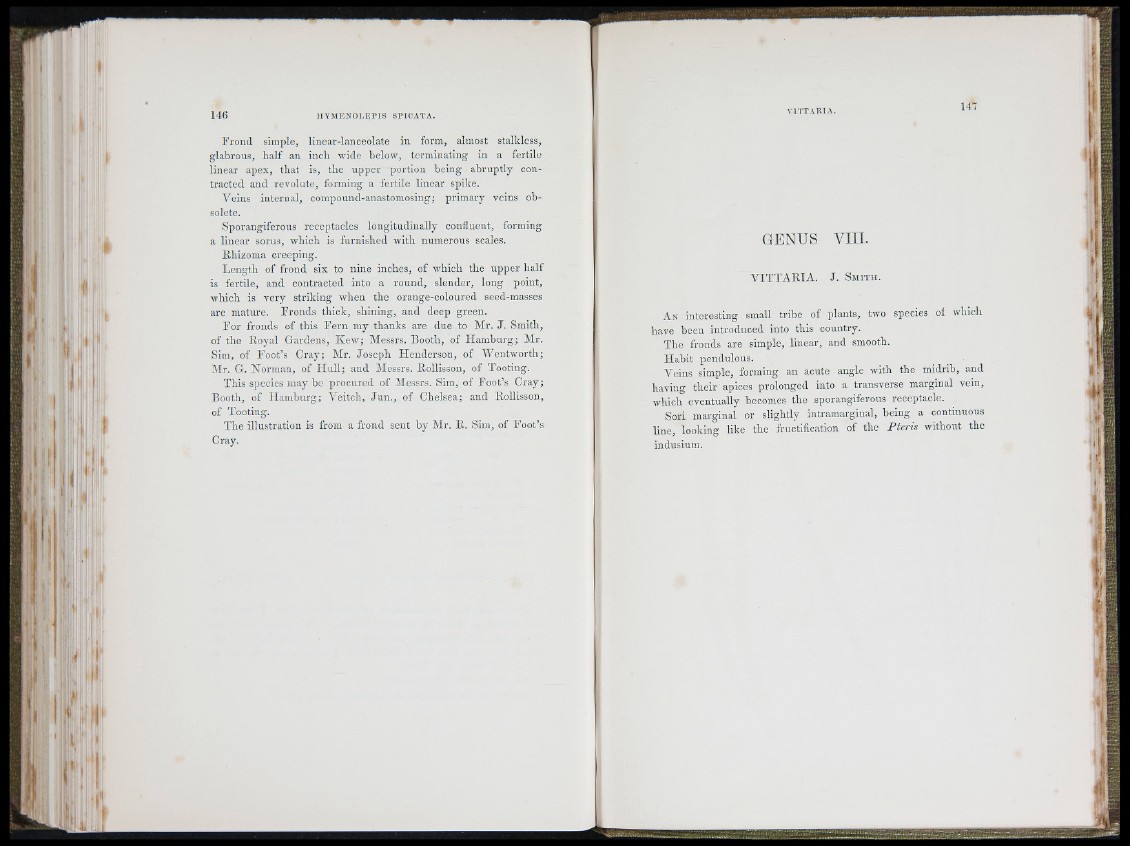
146 H Y M E N O L E P IS S P IC A T A .
V IT T A R IA . 147
F ro n d simple, linear-lanceolate in form, almost stalkless,
glabrous, h a lf an inch wide below, terminating in a fertile
linear apex, th a t is, the u p p e r portion being abru p tly contracted
and revolute, forming a fertile linear spike.
Veins internal, compound-anastomosing; prima ry veins obsolete.
Sporangiferous receptacles longitudinally confluent, forming
a linear sorus, which is furnished with numerous scales.
Rhizoma creeping.
L en g th of frond six to nine inches, of which the u p p e r half
is fertile, and contracted into a ro u n d , slender, long point,
which is very striking when the orange-coloured seed-masses
are mature. Fronds thick, shining, and deep green.
F o r fronds of this F e rn my thanks are due to Mr. J . Smith,
of the Royal Gardens, K ew ; Messrs. Booth, of H am b u rg ; Mr.
Sim, of F o o t’s Cray; Mr. Josep h Flenderson, of W en tw o rth ;
Mr. G. N orman, of F Iu ll; and Messrs. Rollisson, of Tooting.
This species m a y b e p rocured of Messrs. Sim, of Foot’s Cray;
Booth, of H am b u rg ; V e itch , J u n ., of Chelsea; and Rollisson,
of Tooting.
T h e illustration is from a frond sent by Mr. R. Sim, of F o o t’s
Cray.
G EN U S V I I I .
V IT T A R IA . J . S m i t h .
A n interesting small tribe of plants, two species of which
have been introduc ed into this country.
The fronds are simple, linear, and smooth.
H a b it pendulous.
Veins simple, forming an acute angle with the midrib, and
having th e ir apices prolonged into a transverse marginal vein,
which eventually becomes the sporangiferous receptacle.
Sori marginal or slightly intramarginal, being a continuous
line, looking like the fructification of the P te ris without the
indusium.